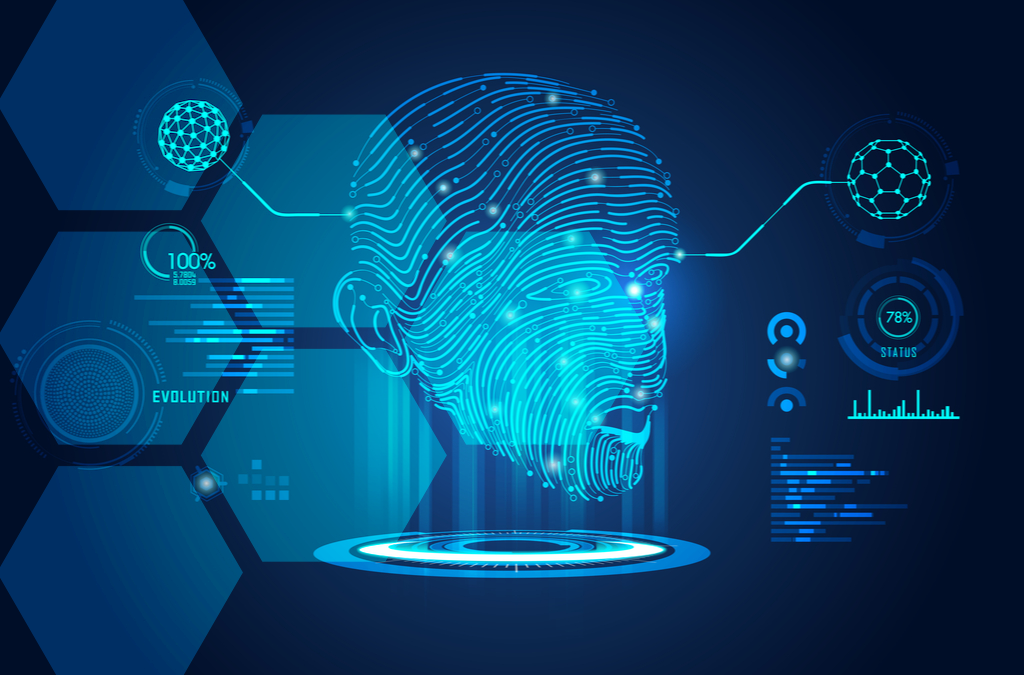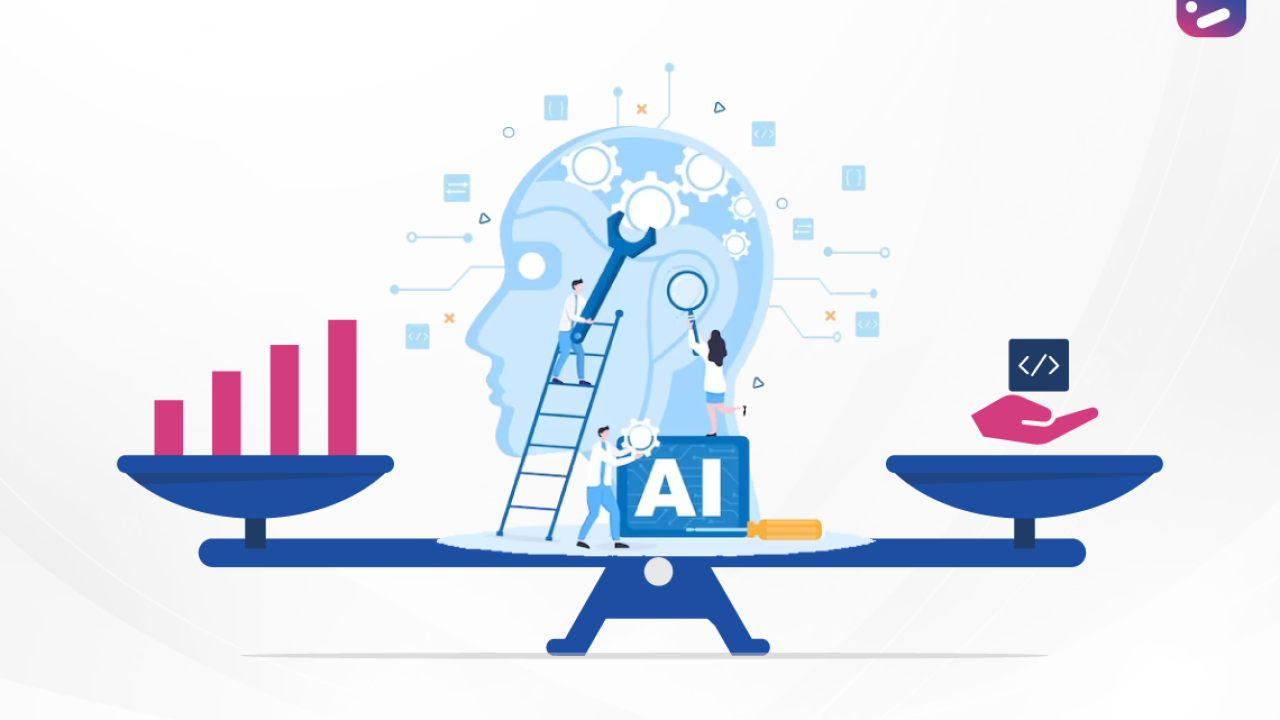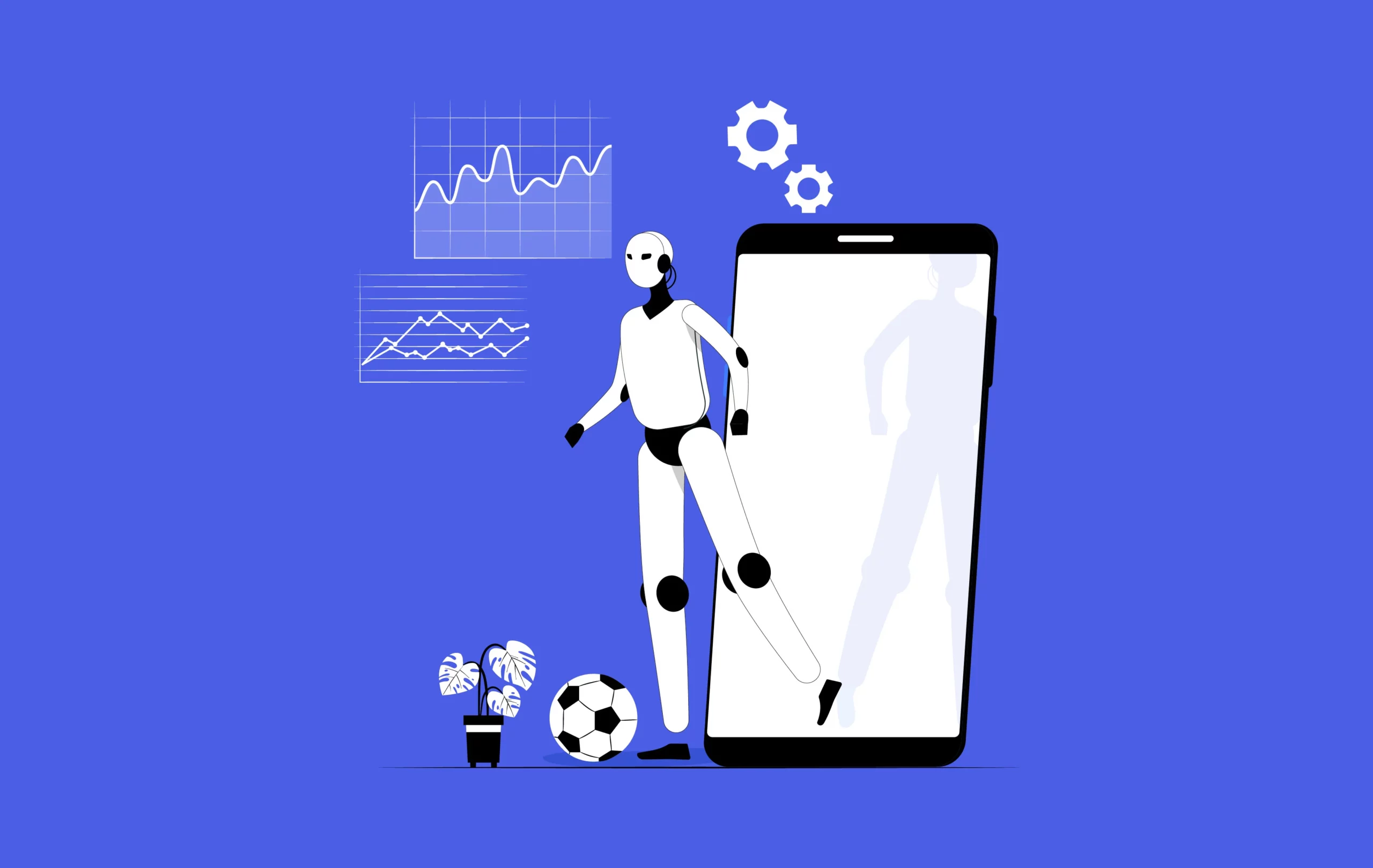
Why Every Business Needs to Embrace Artificial Intelligence Now
November 11, 2023
Rev up your Revenue with these Proven SEO Techniques for Business Content Creation
November 14, 2023A. Unraveling the AI Paradox
In the labyrinth of technological evolution, Artificial Intelligence (AI) stands as a modern marvel, pushing the boundaries of what was once considered science fiction. The AI paradox lies in the entwined relationship between its rapid advancements and the growing concerns surrounding consumer privacy. As we dive into this paradox, we’ll decipher the complexities that arise when cutting-edge technology clashes with the fundamental right to privacy.
To begin, let’s define AI in its contemporary context. AI refers to machines’ ability to simulate human intelligence, encompassing processes like learning, reasoning, problem-solving, and even language understanding. From its inception to the present, AI has undergone a metamorphosis, evolving from rudimentary rule-based systems to the intricate neural networks that power today’s sophisticated algorithms.
The paradox surfaces as a dichotomy between the awe-inspiring potential of AI to revolutionize industries and the ethical qualms regarding personal privacy. The very essence of AI lies in its capacity to analyze colossal datasets, extract patterns, and make predictions. However, this analytical prowess raises a pertinent question: How do we balance the marvels of AI with the right to privacy?
B. Significance of the Ethical Debate
The ethical debate surrounding AI’s impact isn’t merely an abstract discourse reserved for tech enthusiasts and policymakers. It reverberates through the fabric of society, influencing our daily lives and shaping the future landscape. Understanding this debate requires a glimpse into the historical dance between technology and ethics.
Throughout history, technological innovations have spurred ethical deliberations. From the printing press to the internet, each leap in technology brought forth new challenges and ethical quandaries. The digital era intensifies this debate as AI infiltrates our homes, workplaces, and even our pockets through smartphones.
Why does this matter? Because the implications of AI ethics extend beyond theoretical musings. They impact the very essence of our autonomy, the sanctity of personal information, and the trajectory of societal norms. The ethical compass guiding AI development shapes the world we inhabit, making it imperative to explore and dissect the multifaceted layers of this discourse.
C. Overview of the Blog Post
Now that we’ve dipped our toes into the vast sea of the AI paradox and its ethical ramifications, let’s navigate through the key waypoints of this blog post. Brace yourself for an intellectual journey, where we will dissect the evolution of AI, scrutinize the landscape of consumer privacy, and delve deep into the ethical considerations that accompany this digital revolution.
Our quest doesn’t end with analysis; we’ll embark on a search for equilibrium, exploring collaborative solutions, ethical AI design principles, and the pivotal role of public awareness and education. Along the way, we’ll encounter case studies illustrating both triumphs and pitfalls in balancing AI advancements and consumer privacy. As we conclude, we’ll gaze into the future, pondering the road ahead and the imperative task of shaping an ethically sound AI landscape.

The Evolution of Artificial Intelligence
A. From Turing to Neural Networks
The annals of AI history echo with the contributions of visionaries like Alan Turing, who laid the groundwork for machine intelligence. Turing’s conceptualization of the Turing Machine in the mid-20th century paved the way for early AI endeavors. However, it’s the advent of neural networks that marks a paradigm shift in AI development.
Neural networks, inspired by the human brain’s structure, revolutionized how machines learn. This departure from rule-based systems allowed AI to transcend pre-defined instructions, enabling it to recognize patterns, learn from data, and improve over time. The ripple effect of this shift echoes through contemporary AI applications, from image recognition to natural language processing.
B. Current State of AI
Fast forward to the present, and AI is no longer confined to academic discussions or research laboratories. It’s seamlessly integrated into our daily lives, often without us realizing it. From voice-activated assistants like Siri and Alexa to recommendation systems shaping our online experiences, AI is omnipresent.
The symbiotic relationship between AI and big data fuels this omnipresence. AI thrives on data, and the digital age generates a staggering amount of it every second. This data deluge, comprising our online behaviors, preferences, and interactions, becomes the raw material for AI algorithms. These algorithms, in turn, influence the content we consume, the products we purchase, and the information we encounter.
C. Future Trends in AI
As we peer into the future, the trajectory of AI seems boundless. Predicting its course involves a delicate dance between technological optimism and ethical prudence. While advancements like explainable AI promise to demystify algorithmic decision-making, there’s a looming shadow cast by the potential exacerbation of privacy concerns.
Imagine a future where AI not only understands our preferences but anticipates our needs before we articulate them. While this holds the promise of unparalleled convenience, it raises ethical red flags regarding consent, data ownership, and the potential for algorithmic manipulation. Striking a balance between embracing AI innovations and safeguarding individual privacy remains a tightrope walk, demanding careful consideration and proactive ethical frameworks.

Consumer Privacy in the Digital Age
A. The Data Explosion
In the digital age, data isn’t just a commodity; it’s the currency that powers the AI-driven economy. The exponential growth of data generation, fueled by our online activities, sensors, and interconnected devices, forms the backbone of AI’s analytical capabilities.
Consider the scenario: with every click, swipe, and transaction, we contribute to an ever-expanding pool of data. This data isn’t inert; it’s the lifeblood that feeds the algorithms, allowing them to discern patterns, make predictions, and tailor experiences to our individual preferences. However, this symbiotic relationship between data and AI comes with a price—the erosion of personal privacy.
B. Privacy Legislation
In response to the escalating concerns about data privacy, legislative bodies worldwide have taken measures to protect individuals. One towering figure in this global movement is the General Data Protection Regulation (GDPR). Enforced in the European Union and influencing policies globally, GDPR sets a precedent for safeguarding individual privacy in the digital landscape.
GDPR’s impact extends beyond geographical borders. It places stringent requirements on businesses handling personal data, emphasizing transparency, user consent, and the right to be forgotten. While lauded for its commitment to privacy, GDPR isn’t without its criticisms, sparking debates about its effectiveness, enforcement challenges, and the need for continual evolution.
C. Technological Safeguards
Legislation provides a framework, but the responsibility of safeguarding consumer privacy also falls on technological innovations. Encryption emerges as a stalwart guardian, ensuring that sensitive information remains indecipherable to unauthorized parties. In the intricate dance between privacy and security, encryption stands as a bulwark against potential breaches.
Biometric authentication adds another layer to this technological tapestry. Fingerprint scans, facial recognition, and other biometric identifiers offer a personalized shield, allowing access only to the rightful owner. However, this innovation isn’t without ethical considerations, such as the risk of biometric data misuse and the potential for false positives.
The ethical conundrum deepens as we contemplate the integration of privacy-focused technologies. While these innovations promise enhanced protection, they also raise questions about unintended consequences, societal implications, and the need for continuous ethical scrutiny.

Ethical Considerations in AI Development
A. Bias in AI Algorithms
As AI algorithms navigate the sea of data, they are not impervious to biases ingrained in the information they process. Algorithmic bias, a phenomenon where AI systems inadvertently favor certain groups over others, has raised substantial ethical concerns.
Algorithmic bias isn’t a theoretical concept; it manifests in real-world scenarios, often amplifying societal disparities. For instance, biased facial recognition algorithms have exhibited higher error rates for people with darker skin tones, perpetuating systemic inequalities. Understanding and rectifying these biases is crucial for ensuring AI applications contribute positively to society.
B. Transparency and Accountability
To address the ethical challenges posed by AI, transparency and accountability emerge as essential pillars. Transparent AI development involves demystifying the decision-making processes of algorithms. It necessitates a clear understanding of how AI reaches conclusions, makes recommendations, and influences user experiences.
Alongside transparency, accountability ensures that when AI systems make errors or exhibit biases, there are mechanisms in place to rectify and learn from these shortcomings. Industry initiatives and standards, such as the IEEE Global Initiative on Ethics of Autonomous and Intelligent Systems, aim to establish guidelines for ethical AI practices.
C. Informed Consent in the Digital Era
In the age of pervasive AI, the concept of informed consent undergoes a transformation. Traditionally associated with medical procedures, informed consent now extends to digital interactions. Obtaining consent for data usage becomes a multifaceted challenge, considering the intricate web of interconnected services and the complexity of AI algorithms.
Ethical frameworks must evolve to address this shift, ensuring that individuals have a clear understanding of how their data will be utilized in the realm of AI. Striking a balance between user convenience and ethical data practices becomes imperative to foster trust in the evolving digital landscape.

Striking a Balance: AI Innovation vs. Privacy Protection
A. Collaborative Solutions
Balancing the scales between AI innovation and privacy protection requires a collaborative effort. Governments, tech companies, and the public all play pivotal roles in shaping the ethical contours of AI development. International cooperation becomes paramount as the digital landscape transcends national borders.
Governments can enact and enforce regulations that set ethical standards, ensuring businesses prioritize privacy. Tech companies, as architects of AI solutions, bear the responsibility of integrating ethical considerations into the fabric of their innovations. The public, armed with awareness and advocacy, becomes a driving force, demanding accountability and transparency in AI practices.
B. Ethical AI Design Principles
The crux of achieving a harmonious balance lies in embedding ethics into the very DNA of AI design. Ethical AI design principles encompass a spectrum of considerations, from minimizing bias in algorithms to prioritizing user privacy. Interdisciplinary collaboration, bringing together experts from diverse fields, becomes instrumental in crafting ethical guidelines that resonate across industries.
The importance of diversity in AI development cannot be overstated. A team representing varied perspectives, backgrounds, and experiences acts as a safeguard against inadvertently perpetuating biases. In essence, ethical AI design isn’t a solo endeavor but a symphony of voices harmonizing to create technology that uplifts rather than infringes on societal values.
C. Public Awareness and Education
In the quest for equilibrium, public awareness emerges as a potent catalyst for change. Educating the masses about AI, its implications, and the associated ethical considerations empowers individuals to make informed decisions. The onus falls on educators, policymakers, and industry leaders to disseminate knowledge and foster a culture of ethical responsibility.
Informed discussions become the bedrock of societal progress. When individuals understand the nuances of AI ethics, they become active participants in shaping the narrative. It’s not just about reacting to technological advancements but proactively influencing the trajectory of AI development through a collective commitment to ethical values.

Case Studies: Successes and Failures in Balancing AI and Privacy
A. Success Stories
In the realm of AI and privacy, success stories illuminate the path forward. Companies that prioritize ethical AI practices not only gain consumer trust but also showcase the viability of a harmonious coexistence between innovation and privacy protection.
Consider the example of Apple, known for its stringent privacy policies. Apple’s commitment to user privacy, manifest in features like App Tracking Transparency, not only aligns with ethical principles but also resonates with consumers. This success demonstrates that ethical AI isn’t a hindrance to business; it’s a catalyst for building enduring relationships with users.
B. Cautionary Tales
However, the landscape isn’t devoid of cautionary tales. Instances of AI projects leading to privacy breaches serve as stark reminders of the delicate balance at play. Take the case of Cambridge Analytica, where data harvested from Facebook users was used to manipulate political opinions. The fallout from such incidents extends beyond financial repercussions to erode public trust in the ethical foundations of AI.
Analyzing these cautionary tales unveils the interconnected nature of AI and privacy. The repercussions of ethical lapses aren’t confined to the immediate aftermath but reverberate through societal trust, regulatory scrutiny, and long-term business viability.
C. The Grey Areas
Navigating the ethically ambiguous terrain of AI involves confronting the grey areas. Scenarios where the right course of action isn’t clear-cut demand nuanced ethical considerations. Consider the dilemma of facial recognition in public spaces, where security concerns clash with individual privacy rights.
Unresolved cases like these serve as crucibles for refining ethical frameworks. They compel society to engage in nuanced discussions, weighing the benefits of technological innovations against the potential harm to individual freedoms. While the grey areas present challenges, they also offer opportunities for collaborative problem-solving and the evolution of ethical standards.

The Road Ahead: Shaping an Ethical AI Future
A. The Need for Continuous Dialogue
The dynamic nature of AI and its ethical considerations mandates an ongoing dialogue. This isn’t a one-time conversation but a continuous engagement among stakeholders. Governments, industry leaders, ethicists, and the public must collaborate in shaping the trajectory of AI, ensuring that ethical principles evolve in tandem with technological advancements.
Continuous dialogue serves as a feedback loop, allowing for the refinement of regulations, industry practices, and societal norms. It fosters an environment where ethical considerations aren’t reactive but proactive, anticipating challenges before they become crises.
B. Regulatory Evolution
Anticipating the future involves recognizing the imperative for regulatory evolution. The landscape of AI ethics is fluid, influenced by technological innovations, public sentiment, and unforeseen challenges. Regulatory bodies must remain agile, adapting frameworks to address emerging ethical concerns without stifling innovation.
The role of regulatory bodies extends beyond enforcement to proactive collaboration with industry experts, ethicists, and the public. By fostering an ecosystem of shared responsibility, regulatory bodies contribute to the creation of a robust ethical foundation that withstands the test of time.
C. Bridging the Gap: From Theory to Practice
The transition from theoretical ethical principles to practical implementation is a crucial bridge that demands careful construction. Implementing ethical guidelines in real-world scenarios involves overcoming challenges embedded in the fabric of AI development.
Interdisciplinary collaboration emerges as a linchpin in this bridge-building process. When ethicists, technologists, policymakers, and users collaborate, they bring diverse perspectives to the table. This diversity becomes the driving force for transforming theoretical ideals into tangible practices that resonate across industries.


